Sin tu luz vivo triste / 2023
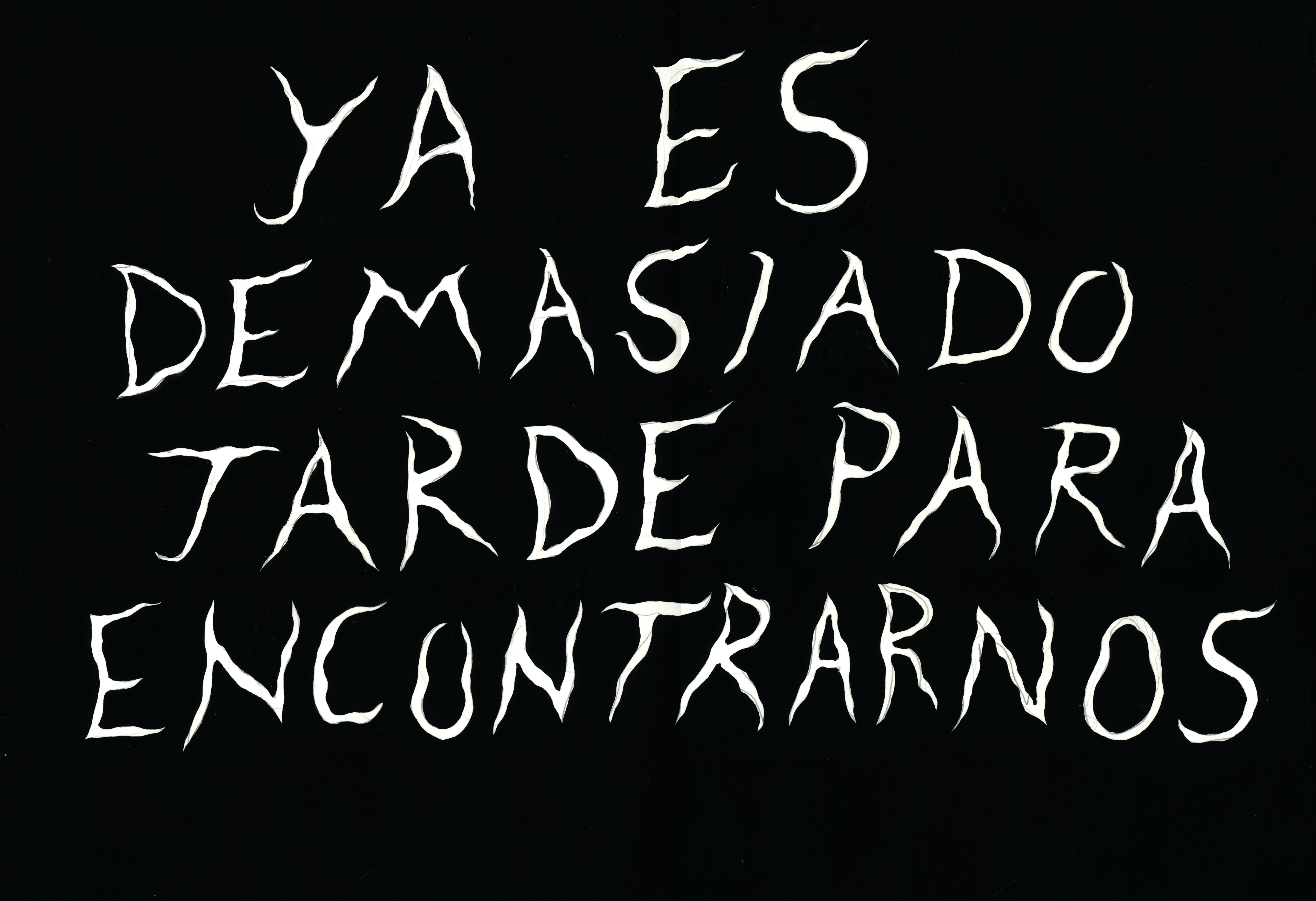
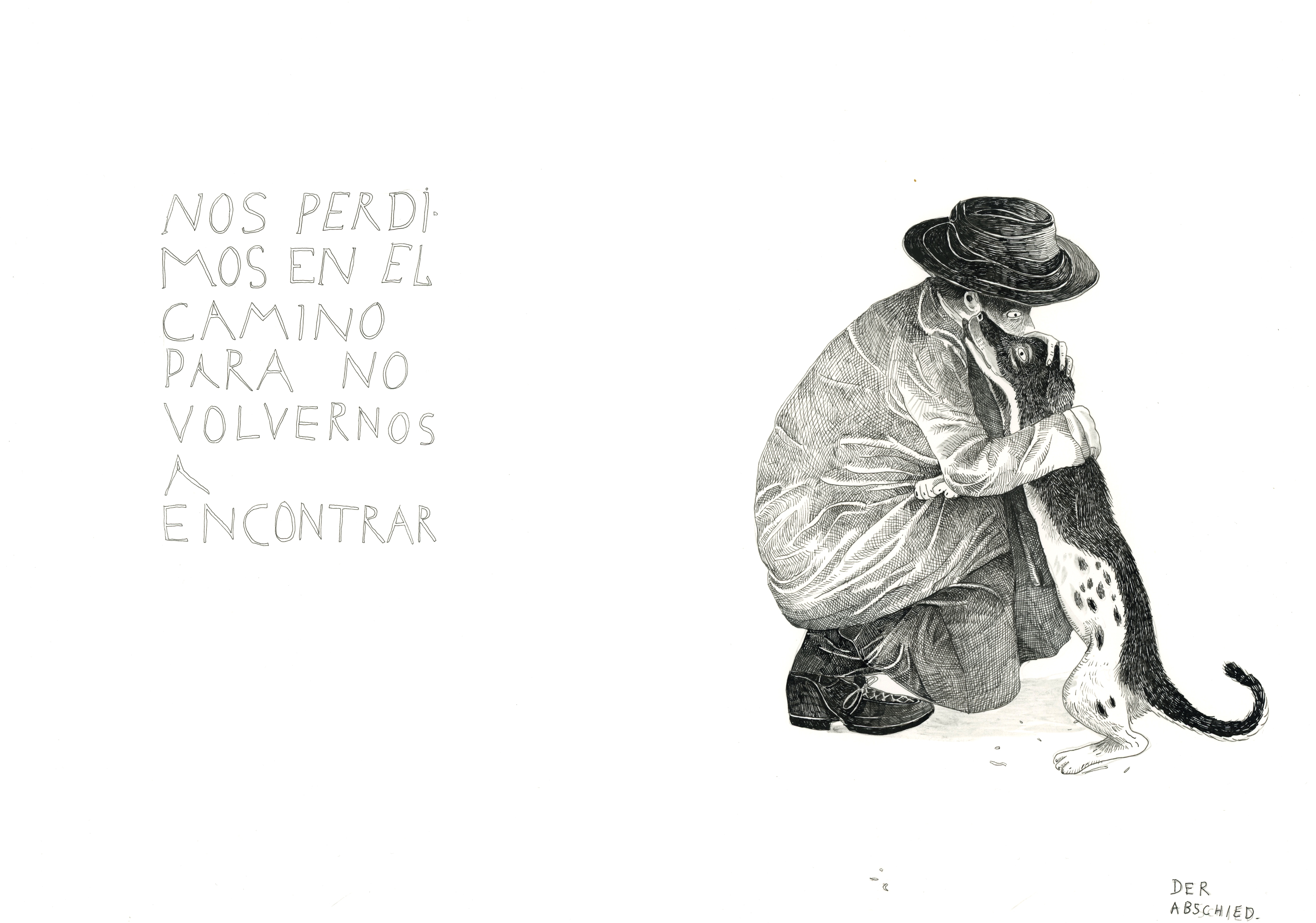

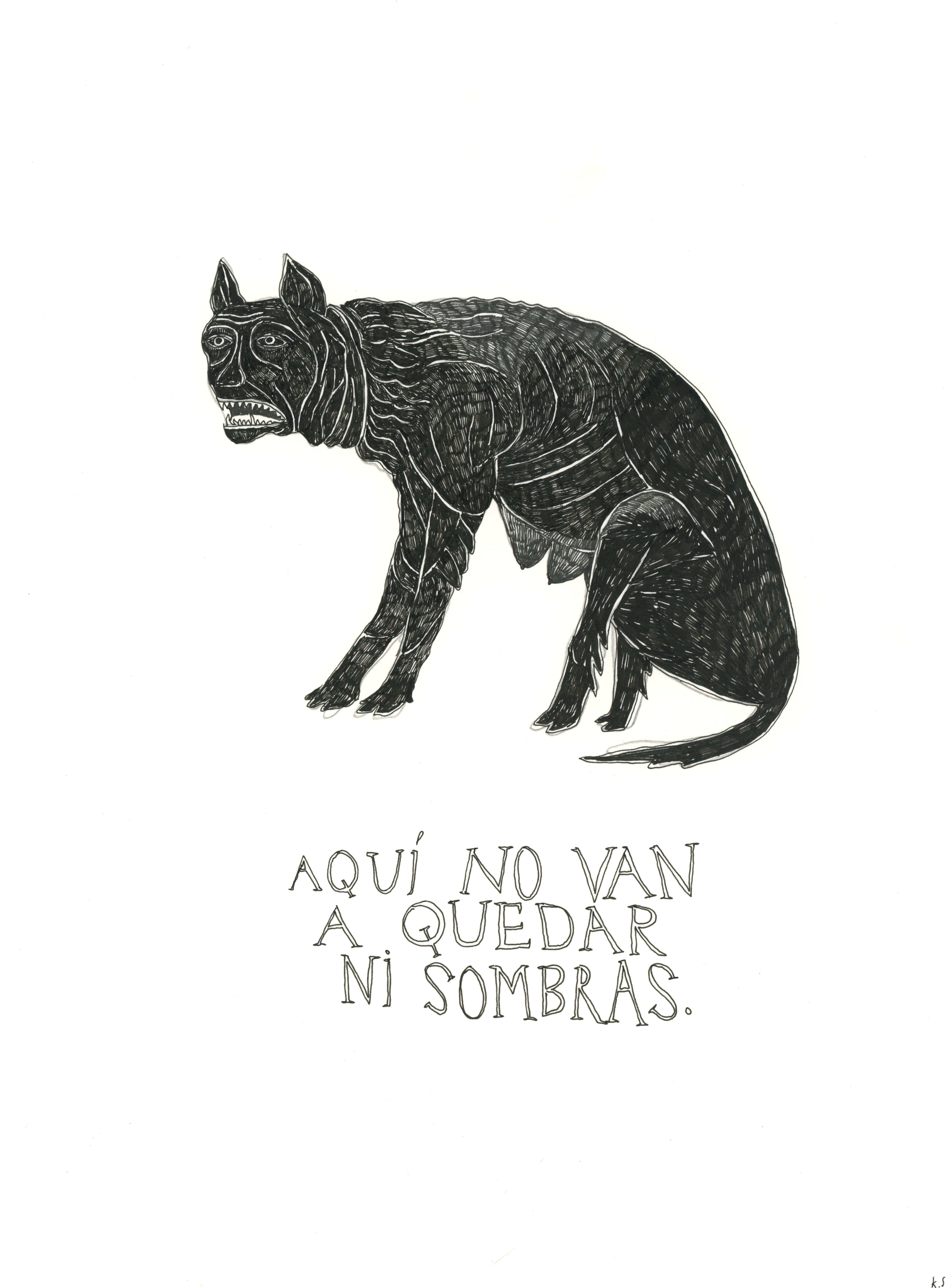
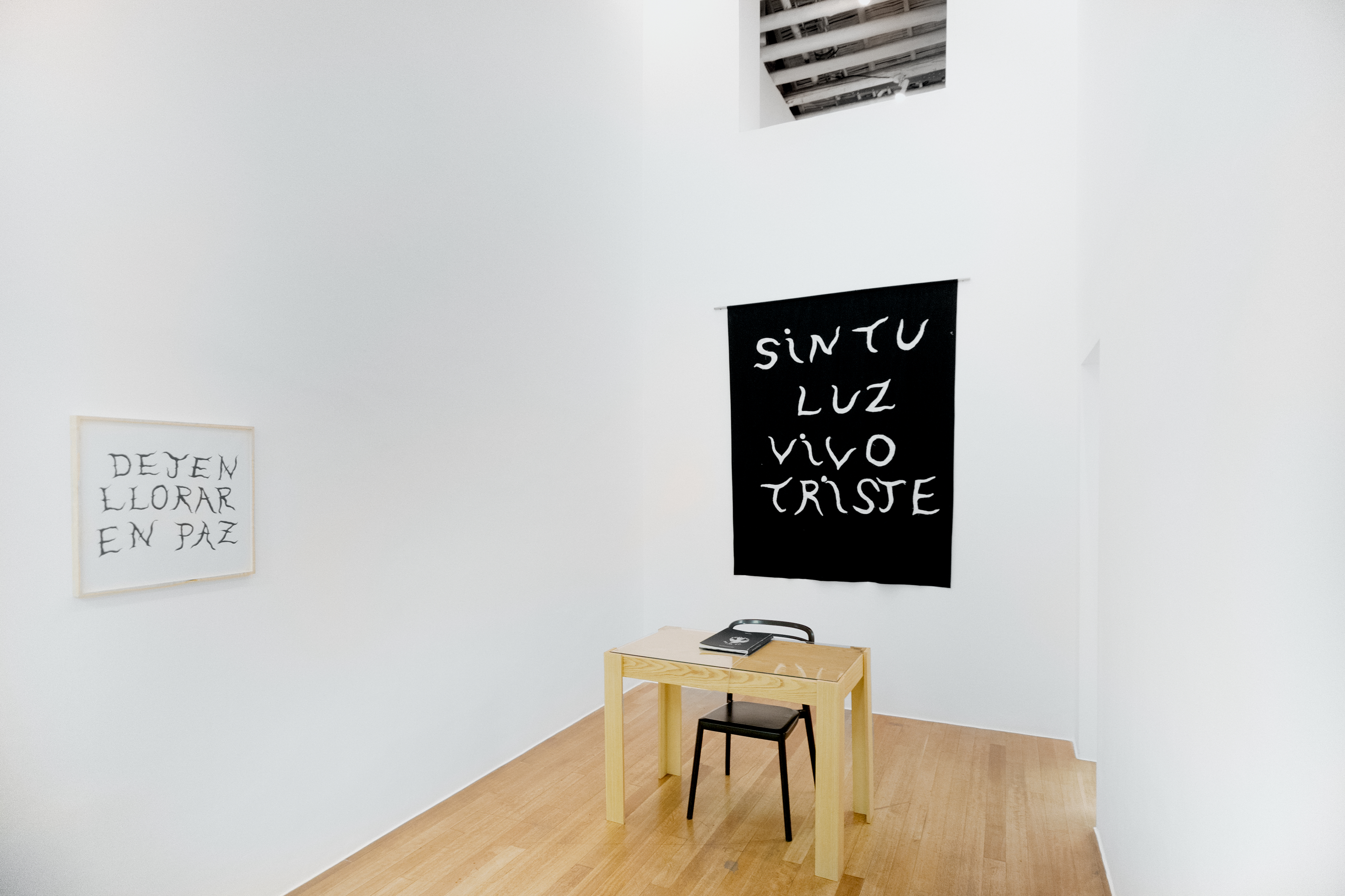

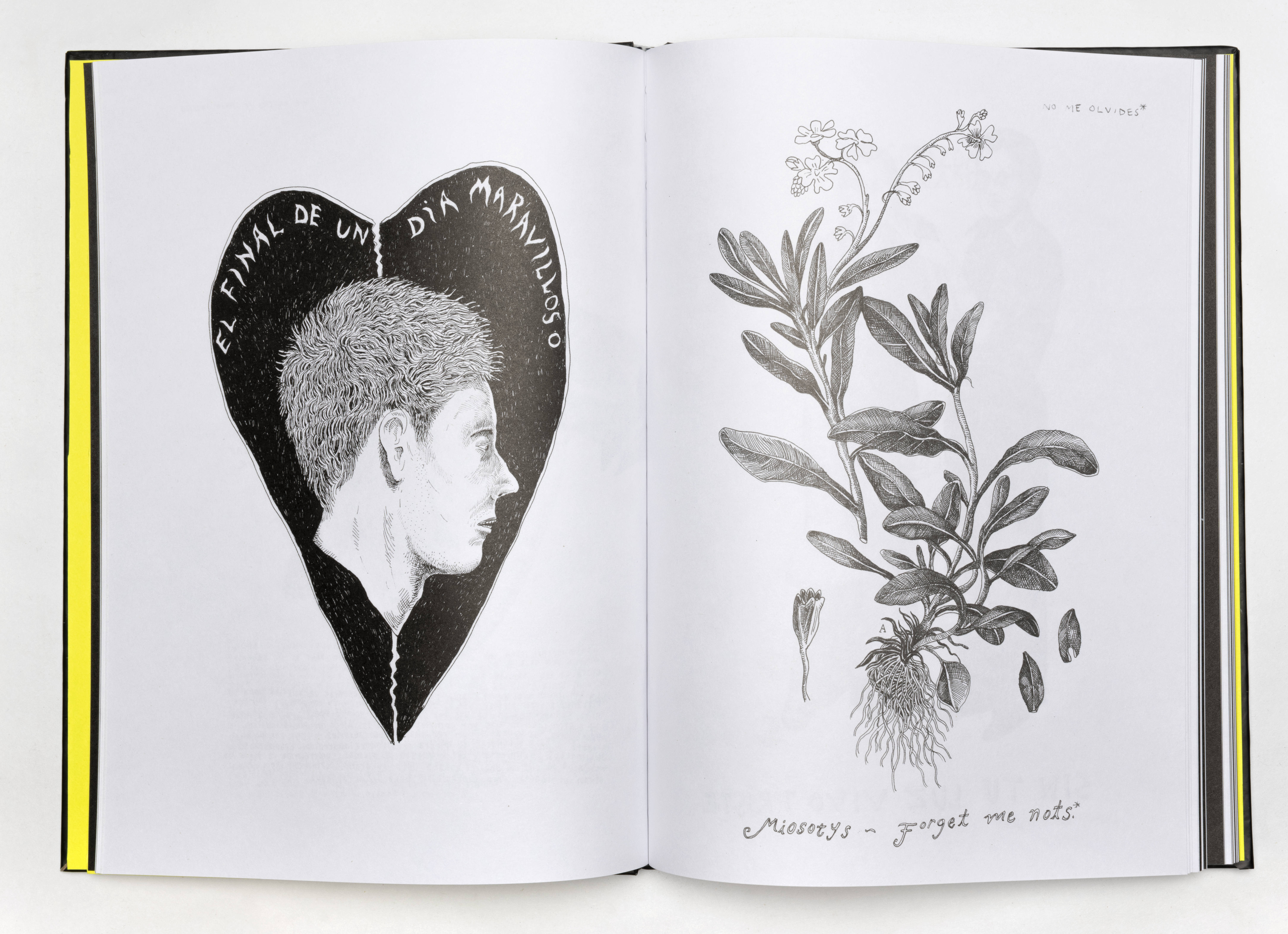


Published by: Cain press
500 copies
23 X 33 Cms
It’s Hard to Say Goodbye
Time and its transience—its capacity to breed change—have often been important subjects in Kevin Mancera’s already considerable body of work, and they return as central concerns in his new series of drawings, Sin tu luz vivo triste (Without your Light, I Live in Sorrow), dedicated to the memory of his recently-deceased grandmother. The title is a fragment from an (imaginary) conversation between the artist and his absent grandmother, summoned through the metaphor of light and its attending connotations of warmth and guidance. It might seem, then, that we are being led to a place of intimacy and sentiment. But this is not quite the case; these concepts hardly suffice to frame this work, although here and there we might catch a hint of sentimentality, mostly when Mancera is extracting texts from popular culture and relocating them in his drawings.
Occasionally we do come across the image of the missing grandmother, but there is no trace of pathos, no weepiness. As always, Mancera draws his imagery from an extremely broad world of representations, and the characteristic ambiguity and mystery of his constructions are never at risk of falling into the obvious. It is true that most drawings in the book touch on the subjects of absence, death, memory, the irrecuperable, something that is yearned for, something that has been lost—sometimes with a subtle touch, as in the drawing of the Myosotis plant commonly known as forget-me-not. The extinction of living species, a theme that he often returns to, is something that has always interested him. We see the last living quagga, an incredibly beautiful zebra from the African plains, exterminated by hunters in the late-nineteenth century; we see a great auk, a flightless bird also vanished from the Earth by human deed, coveted for its eggs or feathers. But we also find explicit depictions of death: severed deer heads, a dog that is now a corpse, a skull overgrown by weeds. And then there is the loneliness of those who remain, or the isolation that comes with a premonition of death, as when the cub bear, glued to his mother, painfully anticipates her future absence.
A constant in Mancera’s drawings is the lively interaction between image and text—indeed, my guess is that this is where many of the drawings originate. His written sources include aphorisms, song lyrics, scientific accounts, lapidary statements, and he inserts them as suggestions or supplements, ironic asides or humorous commentaries. “Time consumes us,” “sooner or later everything will have to fall,” “not even shadows will remain here,” “something new will have to rise,” are a few examples of his titles or quips, printed in letters that are themselves drawings, sometimes reminiscent of popular art or calligraphy manuals, with occasional traces of the naïve, the gothic, the scabrous.
********
Drawing, like writing and making art in general, is often an attempt to recover the unattainable: the absent or the longed-for places. A drawing is a way of restoring a presence that is now "touched," however, by the spirit of the person who has brought it back and is thus infused with the personal interjections of the artist, his experiences and his ideas. In that sense, these images are not reproductions of reality but independent realities revitalized by memory. They are a victory against forgetting, we might say—a desire to immortalize what is depicted—, but they are also a failure, a defeat, since what we are missing retains its distance. In the case of drawing, this distance is uniquely concrete, because a drawing gives us a view of something that we cannot touch. And yet that tactile experience is there, although only for our eyes, as something mental and emotional. This palpability is something that Mancera achieves through the perfection of craft, a virtue that carries so little weight in current "art," although it remains so recognizable and admirable.
The craft on display in these drawings inevitably reminds us that a person has worked on them, and that the work is entwined with pleasure and hardship. We are compelled to wonder how many hours were invested in their making, but above all we can sense in them an intensity of passion, concentration, and persistence. Mancera’s traits are not sinuous or evanescent, like those of many of his peers. I would describe them as forceful, concrete, contained by their contours. And this is why they don’t move like beings in the ordinary world. However, theirs is another movement, which speaks of drawing itself and the act of drawing. The artist is not looking to convey a sense of reality for us—he is not striving for resemblance to a model. He wants us to perceive an alternate reality: the dark bodies, the dead eyes, the strange hair. And yet, in Mancera’s drawings we can feel the softness of feathers and the density of fur, the elasticity of muscles and—in his hieratic figures—the toughness of stone. But there is more behind these appearances—a word that has just now appeared: something half-said, a final silence, a feeling, a piece of knowledge. This is all conveyed by style. In style we experience what technique can yield beyond the mere fulfillment of a task. Technique as a need or an imperative, and as the irrefutable presence of the physical—and therefore the perishable.
Sin tu luz vivo triste offers us a glimpse into Mancera’s considerable and eclectic world of references, doubtlessly amassed through investigative curiosity and filtered by the sensibility of his gaze. We often come across images that remind us of something already seen: an illustration from a science book, the ancient art of Greece and Rome, a picture from a children's book, Orientalist imagery or visual documents from so-called "primitive" worlds. Mancera also seems to tap into popular and folk-art forms, freely swerving from the exotic to the bookish, to the ancestral, to the local. Our eyes never grow tired of looking at these drawings, and inevitably they look for connections between them, because Mancera is constantly casting us towards unsuspected places.
********
Sin tu luz vivo triste is many things at once: an intellectual exercise filled with thought, research, humor, detachment. A work permeated by pain, in many ways, although free from solemnity. Here, there is room for the personal, for nostalgia, despair, and fear, but also for realities that touch all of us, the realities of our place in nature and our predatory compulsions. Above all, this book is an extraordinary demonstration of drawing—just drawing: drawing as a commitment to artistic craft and as a source of pleasure.
Piedad Bonnett